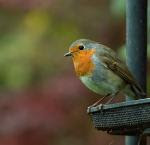In Our Organizations, Are We Titmice or Red Robins?
 I received an email from my Father-in-Law this morning, with a nice little learning story which I thought I would share here. It goes as follows:
I received an email from my Father-in-Law this morning, with a nice little learning story which I thought I would share here. It goes as follows:
****************
In the late 19th century in Great Britain, milkmen left open bottles of milk outside people’s doors. A rich cream would rise to the top of the bottles. Two garden birds, titmice and red robins, began to eat the cream. In the 1930’s, after the birds had been enjoying the cream for about 50 years, the British put aluminium seals on the milk bottles. By the early 1950’s, the entire estimated population of one million titmice in Great Britain had learned to pierce the seals. The red robins never learned that skill. What happened?For learning to occur among birds, three things need to happen:
(1) Some of the individuals in the organization must have the potential to invent new behaviours or develop new skills;
(2) The members of the species must have and use the ability to move around, and they must flock or move in herds rather than sit individually in isolated territories; and
(3) The species must have an established process for transmitting a skill from the individual to the entire community through direct communication.
Red robins are territorial and don’t communicate much with one another, so they didn’t learn the new skill. Titmice flock together and were able to learn the new skill through-out the whole country.So, when you learn something new, or have a great idea on how to improve something, share what you’ve learned. You and your colleagues have many ways to communicate ideas and information – use them! Through improved organizational sharing and learning, we can help each other achieve our goals.



Leave a Reply
Want to join the discussion?Feel free to contribute!